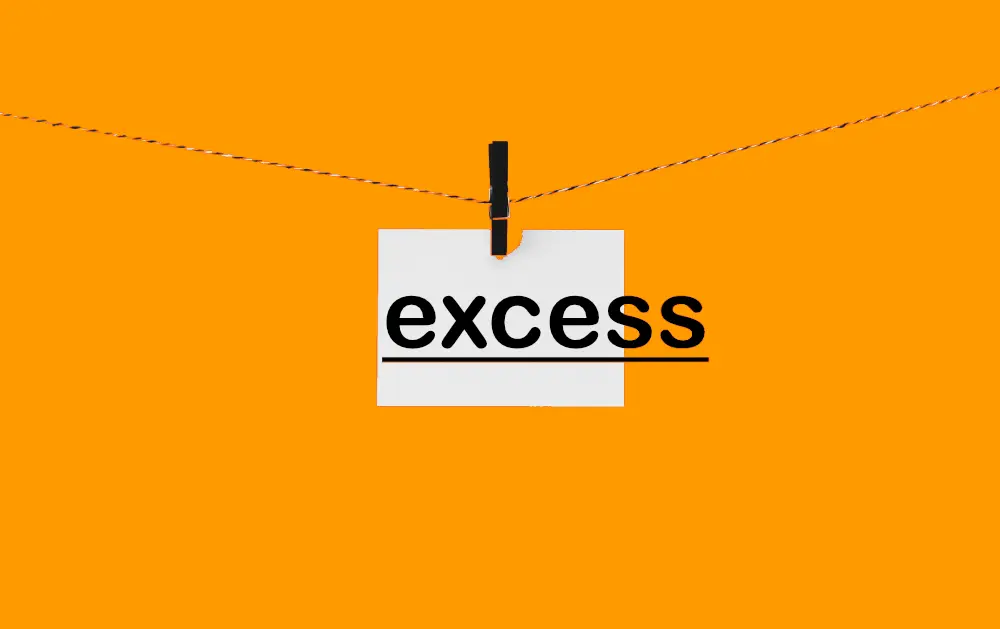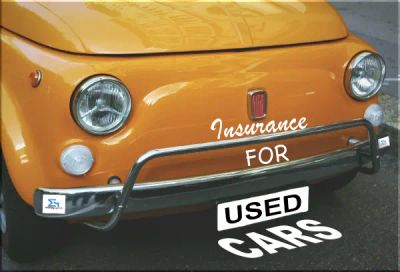When you buy your car, motorcycle, or other relevant insurance policies, you may notice a term called ‘excess payable’. Excess or Excess Payable refers to the amount you as a policyholder will pay to the insurer when you make a claim on your policy.
For complete newbies to the insurance world, this sounds weird. An insurer is ideally expected to pay and help you cover your expenses when you file your insurance claims. However, why would an insurer ask you as a policyholder to pay when it comes to claims? Well, there are reasons for an insurer to apply this clause to help protect administrative expenses.
As a policyholder, while exercising his or her right for a claim, nothing is stopping one to make claims amounting to very small amounts. Some policyholder may also make multiple claims of small amounts within the policy period. However, for an insurer handling such a claim request would mean more management expenses. This expense might be way more than the amount you as a policyholder might finally get. For example, one can file a claim amounting to 1$, but the insurer incurs a cost of close to 50$ to process this.
In order to satisfy this claim, the insurer had to bear a lot more expenses such as claims management, other processes, payout, etc. This cost may not be justifiable only to pay out a single dollar in a claim. To protect an insurer from such claims and also to avoid waste of resources for small claims, an excess is attached over the policy.
As per the policy terms, any policyholder making a claim will have to pay the excess amount on a claim. This avoids policyholders from making small or multiple claims.
Excess on Car Insurance in Singapore
An excess is levied on car insurance plans by most insurers in Singapore. The excess on car insurance plans in Singapore can range anything between 0$ and 3000$. For example, FWD Singapore quoted us a standard excess of 500$.
When you opt for a car insurance plan- either comprehensive, third party fire and theft or third party only, you may have to pay an excess if you have signed up for it. The more the excess you sign up to pay later on the claim, the lesser is the premium paid now. However- you might want to read on how much excess you should opt for below.
Along with the default excess, various other types of excesses are also levied. Check below on the various other types of excess that you may have included in your policy.
Excess on Motorcycle Insurance in Singapore
Most Insurers levy a standard or adjustable excess on Comprehensive plans for motorcycle insurance in Singapore.
Some insurers set fixed excess for Third party fire and theft and none for Third-party only claims.
For example, on DirectAsia’s motorcycle policy, one can adjust the excess to be paid for a Comprehensive plan and is fixed to 600$ for Third party fire and theft.
Along with the standard excess, insurers can also levy other types of excess such as young drivers, my workshop usage, medical claims, etc.
When and how do you pay excess on insurance in Singapore?
When you opt for a policy with an excess, you will be expected to pay the excess amount when you are filing a claim from your end. If you do not file a claim, no excess payment would be involved.
In cases where you are to receive benefits, some insurers may optionally offset the amount from your payout. However, this practice differs amongst various insurers in Singapore.
Some insurers follow the practice of requiring you to pay the excess upfront and then the total receivable amount will be paid to you along with adjustments of the excess. This may be to log the transactions of receiving excess and insurer paying out the claims seperately.
Some other insurers might also ask you the pay the excess at the workshop, so that it is used to offset the charges for any repair works.
It is always good to check with your Insurer on their practice and where, when, and how do they want you to pay the excess amount.
Can I not pay excess on insurance?
If your policy mentions the zero excess clause, you may not be required to pay excess. You may also have a case by case agreement with the insurer to offset the excess. In such cases you may not be required to pay the excess.
In scenarios where your policy requires you to pay the excess and you decline to do so, the claim may be rejected by the insurer.
When your claim is not at fault, some insurers may also forego the excess, when the amount can be claimed from the at-fault driver or his or her insurer.
For future references, you can always opt for zero excess policies, where you may not be required an excess. However this only refers to the standard excess. You might still be required to pay other applicable excess based on your policy.
What is voluntary excess in Insurance?
Some insurers may quote your insurance with zero excess payable. In such cases, the excess you’ll pay for a claim would be zero, but usually, the upfront premium is high.
In such cases, you can negotiate with the insurer on a clause to pay excess on the claim, but pay a lower premium earlier. Such excess is known as “Voluntary” excess. This excess is ‘voluntarily’ paid by the policyholder for a better or reduced quoted premium. Nowadays- most Insurers in Singapore, often quote the price with a voluntarily excess pre-selected.
What is age or driver experience excess in Insurance?
Younger drivers or drivers with lesser experience are more prone to accidents and related claims. As such, many insurers apply an excess for younger or inexperienced drivers.
This extra excess may be applied to the main driver- if the main driver is younger or inexperienced or even the named driver who is younger or inexperienced.
The majority of insurers in Singapore assume drivers aged less than 25 years as young drivers and less than 2 years of driving experience as inexperienced drivers.
The excess may range from 2000$ to 3000$. It is always good to check on your policy documents, for the exact excess amount stated.
Glass/ Windscreen damage excess on Insurance?
Glass or Windscreens are commonly and easily breaking parts during accidents. Statistically, many claims involve repairing or replacing the glasses or windscreen on your car or high-end motorcycles as well.
As such, some insurers impose an excess on Glass or Windscreen based claims. That is, if your claims involve the insurer paying out towards glass or windscreen repairs, you may have to shell out some amount as excess from your pocket.
Some insurers in Singapore, do not charge extra excess for Glass/ Windscreen but the upfront premium may be higher in such cases.
Other common types of excess paid on Insurance in Singapore.
Along with the standard or voluntary excess, an insurer can impose various types of excess. Checking your policy document for such excess clauses may help you avoid shocks on claims.
Below are common types of excess on insurance.
- Standard Voluntary excess : This is the standard excess imposed for claims. Insurers do offer an option to opt-out by paying a higher premium. Not all plans may have standard excess.
- Young age excess : This excess may be imposed on main or named drivers or riders who are young and hence presumed to have a higher risk.
- Inexperienced driver excess : This excess is imposed on riders or drivers who may hold very less driving experience or have newly issued first driving license.
- Unnamed Driver excess : Some insurers may impose an excess if the claims are made on faults due to drivers or riders who are not listed on the policy.
- Named driver excess : In some cases, some insurers require to specifically list a risky driver. E.g., someone who has a history of two or more accidents. An extra excess may apply to the claims made on such policies.
- Medical/ Extra Optional Benefit excess : Some insurers may offer you an off the shelf optional benefit and may impose an extra excess for any claims made. E.g., An excess for claims made on Medical cover for an unnamed pillion on motorcycle insurance policy.
Insurers customize their plans to various degrees and may or may not include all of the above excesses. To make an informed purchase decision, it is good to check all the clauses of your policy for any of such hidden excess clause.
How much excess is the best to opt for?
Insurers offer slabs of excess or some way even offer a customizable and flexible amount of excess while quoting you the policy. Now, when it comes to the best excess to opt for, it depends on various factors. Let’s have a look at some that may help you decide on the best amount of excess you should opt for.
- Ability/Budget to pay the excess amount on claims: When it comes to claims, you will have to pay the agreed excess. Failure to pay excess may result in your claim being denied in some cases. This might mean you bearing all the expenses arising. If your budget can’t handle or you foresee not having the ability to easily shell out the excess amount, it is good to lower your excess. However, the premium paid in such cases may be higher. Another way to look at this is to opt for higher excess but also save your possible excess amount in a savings account. By saving the amount separately you are budgeting to pay- if an unfortunate need arises.
- Savings with zero excess or the standard excess: One should have a look at the amount of savings made by opting for lower excess. For example – if opting for 0$ excess, quotes you a premium of 2000$, but opting for 600$ excess, reduces your premium to 1990$. In such case, it may not make sense for some of us to save 10$ for a future dated chance of spending 600$. However, if the savings on premiums are substantial, then it makes sense to opt for a higher excess and pay the lower premium now.
Hopefully, this article has helped you understand what and why excess is charged on insurance, the various types of excess charged, and possible strategies for you to either opt for a lower or higher excess.
You might also be interested to know what is an NCD or No Claim Discount in Insurance.



